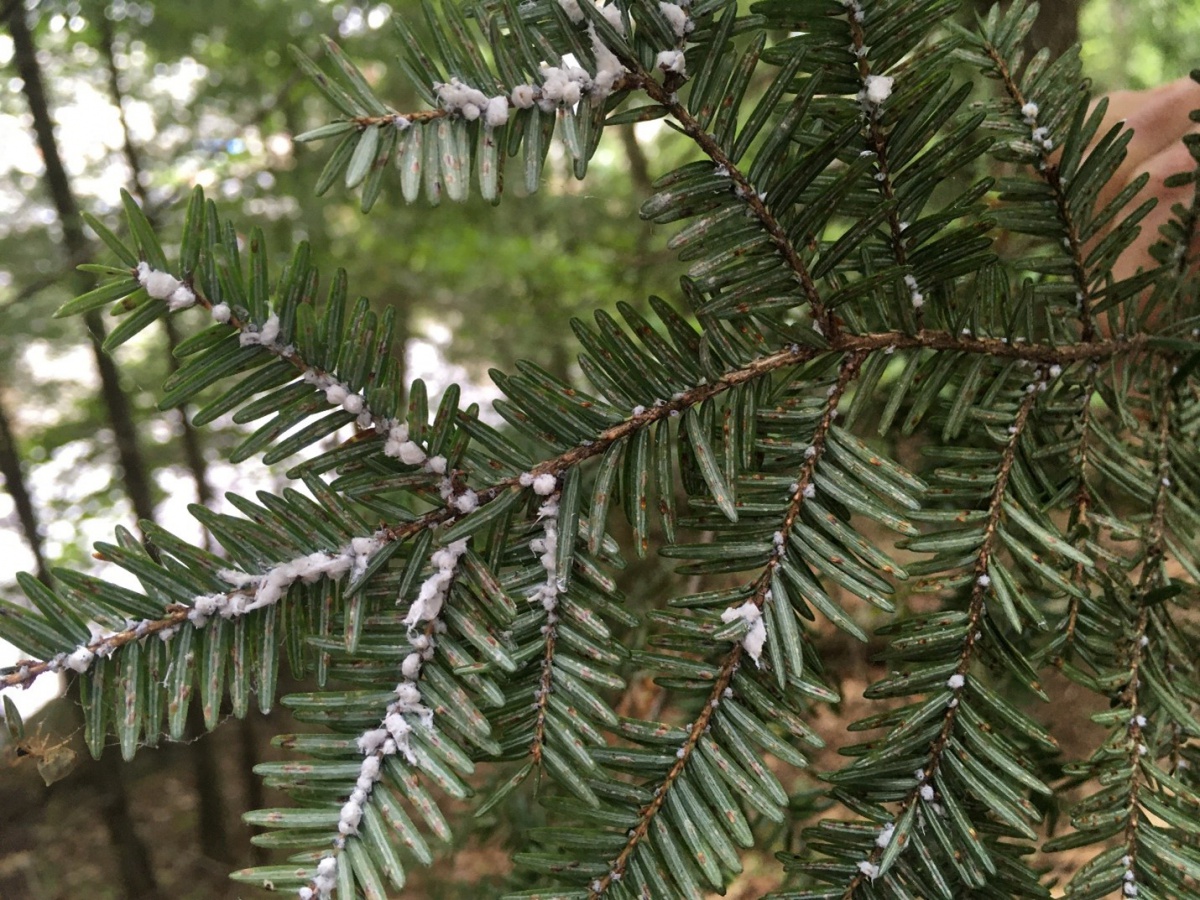What’s Wrong with My Hemlock Tree?
UNH Cooperative Extension’s County Foresters – especially in southern New Hampshire – have been receiving a lot of calls and emails this spring about “sick” hemlock trees. Whether it is a picture sent to our email or standing in a homeowner’s backyard or woodlot, most of the trees we look at are not found to be suffering from diseases caused by pathogens such as fungi, bacteria, or viruses. Instead, many trees are infested by non-native, invasive insects – either hemlock woolly adelgid (Adelges tsugae) or elongate hemlock scale (Fiornia externa). To make matters worse, some trees are infested by both insects. Left untreated, hemlock trees can succumb to these pests in less than 10 years.
In many parts of Rockingham County, especially near the seacoast, the main culprit seems to be the tiny, aphid-like, hemlock woolly adelgid (HWA). Easily recognized by its white, woolly covering, HWA was accidentally introduced to the U.S. in the 1950s and was first detected in Portsmouth about twenty years ago. Once on a hemlock, the insect settles down at the base of a needle and uses it piercing and sucking mouthparts to feed on the tree’s sap. In small numbers, a tree can easily tolerate infestation by HWA; however, once well-established, the collective impact of thousands of insects can be severe.
The insect has slowly increased its range in New Hampshire over the past two decades; however, because it is not very cold tolerant, populations have largely been kept in check by occasional subzero cold snaps. When it comes to HWA control, foresters and arborists closely watch winter forecasts with fingers crossed wishing for an arctic blast. That said, two successive mild winters (2019-2020 & 2020-2021) near the coast have allowed HWA populations to grow quite a bit. Loss of sap to the insect’s feeding, coupled with the ongoing drought, is also leaving many shallow-rooted hemlocks stressed and especially “thin” looking this year.

What can you do?
Woodlot owners should work with their forester to decide on an appropriate plan of action. Options include doing nothing, thinning to maintain tree health, or initiating pockets of regeneration to replace the dying hemlocks. The appropriate response will depend on the level of infestation and the vigor of the trees. In the long run, release of predatory beetles by the NH Division of Forests and Lands looks promising. There is no need to preemptively harvest all your hemlock.
Homeowners with high-value trees have several different treatment options. In dry periods, it is important to water your landscape trees to keep them healthy. Although it might also seem like a good idea to fertilize your infested trees, too – don’t! Feeding your trees with added nutrients, like nitrogen, is also feeding the insects. You may make the infestation even worse. Instead, consider chemical control with a systemic insecticide. Systemic insecticides are absorbed into the tree and ingested by the insect while feeding. Some systemic insecticides are available for use by homeowners, but you should consider hiring a licensed pesticide applicator to treat your trees.
If you have questions about these pests check out nhbugs.org or contact your County Forester.

